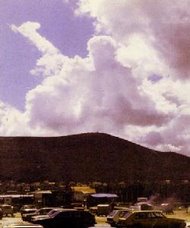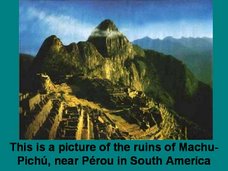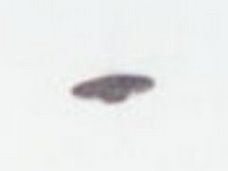 For centuries King Arthur has remained a mystery - the site of his fabled Camelot long forgotten and the true location of his final resting place shrouded by the mists of time. Graham Phillips and Martin Keatman, in their book: "King Arthur - The True Story", have attempted to find the truth behind the historical King Arthur, his Camelot and ultimately his lost tomb.
For centuries King Arthur has remained a mystery - the site of his fabled Camelot long forgotten and the true location of his final resting place shrouded by the mists of time. Graham Phillips and Martin Keatman, in their book: "King Arthur - The True Story", have attempted to find the truth behind the historical King Arthur, his Camelot and ultimately his lost tomb.In the Middle Ages numerous tales were written about King Arthur and his famous knights. Although many themes within these so-called Arthurian romances are clearly invention, a much older manuscript - written three centuries before the earliest of these tales was composed - records that Arthur was an historical figure. According to the work of the ninth-century Welsh monk Nennius, Arthur was one of the last British leaders to make a successful stand against the Anglo-Saxons who invaded the country from their homeland in Denmark and northern Germany in the fifth and sixth centuries AD. This was during the Dark Ages: an era of anarchy and tribal feuding that followed the collapse of the Roman Empire.
Nennius does not say where Arthur originated but he does list twelve of his battles and the last of them, the battle of Badon, is datable from a separate historical source: the work of the British monk Gildas who wrote within living memory of the battle. In his De Excidio Conquestu Britanniae ("On the Ruin and Conquest of Britain"), dating from the mid-sixth century, Gildas makes reference to the event that seems to have occurred around 500 AD.
In the Arthurian romances King Arthur is said to have ruled form a magnificent city called Camelot. However, the writers disagree on its location and its whereabouts has long remained a mystery. So where did Arthur originate? Where was his seat of power?
In the Arthurian romances Arthur is Britain’s one true king. According to Nennius, however, he is the leader of an alliance of British kings. Either way, if he existed, Arthur must presumably have ruled from the country’s mightiest stronghold. Historically, around AD 500 Britain had fragmented into a number of smaller kingdoms - the largest and strongest of which appears to have been the kingdom of Powys. Now merely a Welsh county, in the late fifth and early sixth centuries Powys covered much of what are now the Midlands of England and Central Wales. Its capital was Viroconium, once a thriving Roman town that became the most important city in the country during the post-Roman era.
Viroconium still survives as an impressive ruin just outside the village of Wroxeter, some five miles southeast of Shrewsbury in the county of Shropshire. The latest archaeological excavation there took place in the mid 1990s and revealed that there was a major rebuilding of the city around AD 500. The nerve centre of this new Viroconium was a massive winged building that appears to have been the palace of an extremely important chieftain. As the work seems to have begun at the very time the Britons defeated the Saxons at the battle of Badon, it may well have been the seat of power for the British chieftain who led the Britons at the time - in other words, the historical Arthur. As Viroconium was the Roman name for the city, and no records survive of what the Dark Age Britons called it, could it actually have been the historical Camelot?
Powys was the largest British kingdom at the time of the battle of Badon and its capital was the most sophisticated in the country. So who did rule the kingdom of Powys around 500 AD? A tenth-century manuscript detailing the family trees of important Dark Age chieftains, catalogued as Harleian MS 3859 in the British Library, provides us with the answer. He is one Owain Ddantgwyn- Owain White Tooth - the son of a warlord named Enniaun Girt, whom the manuscript lists as a king of Powys in the late fifth century.
When they first discovered the name of this king, Graham Phillips and Martin Keatman were disappointed. It seemed that the king who rebuilt and refortified Viroconium had not been King Arthur after all. That was until they discovered that the name "Arthur" may not have been a personal name but a battle-name - a title. The language of the Romano-Britons was Brythonic (a cross between Latin and the native Celtic tongue) and it survives almost intact in modern Welsh. The reason being that many of the Britons were driven into Wales during the Saxon invasion. Still preserved in Welsh is the word Arth, meaning "Bear", and many linguists believe that the name Arthur derived from this word. If this is right then Arthur may actually have been the king’s battle-name - The Bear. The name of an animal, in some way typifying the qualities of the individual, was given to many Dark Age kings as an honorary title.
There is compelling evidence that Owain Ddantgwyn, the king of Powys around AD 500, had indeed been called The Bear. Many of these battle-names where inherited by the chieftains’ eldest sons. A whole succession of Welsh kings, for example, where called the Dragon during the later Dark Ages, which is why there is still such an emblem on the Welsh flag. Gildas, writing less than half a century after the battle of Badon, actually refers to Owain Ddantgwyn’s son Cuneglasse as the Bear. If Cuneglasse was called the Bear, then so perhaps was his father.
In "King Arthur - The True Story", Graham Phillips and Martin Keatman claim that Owain Ddantgwyn was the historical figure who seems to have inspired the legend of the mighty King Arthur. They also claim to have discovered Owain's (and Arthur's) final resting place in Shropshire at the heart of rural England.














